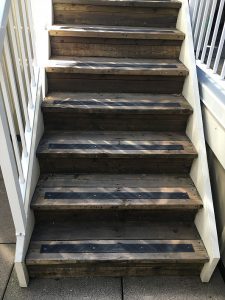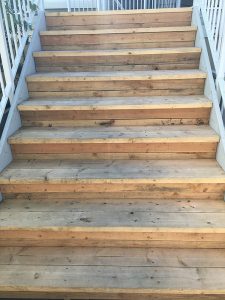When water sits on any unprotected wood surface for a long period of time the moisture creates an environment for fungi to grow and the fibers in the wood to deteriorate and rot. Typically wood rot will begin to occur when the water/moisture content of the wood is anywhere above 20%.
It’s important to catch rot early! Keep your eye out for these common causes of moisture leading to rotten wood:
Sometimes rot may be easily visible and other times it may take some investigating to find. Right off the bat, if the wood is soft, brittle or crumbly it likely has rot. Other common signs are cracked, peeling and blistering paint and wood that is damp, discoloured or green with algae.
Wood can easily be tested for rot by probing with a screwdriver, wood with interior rot will feel soft and sound hollow when tapped. If your screwdriver can easily poke into the wood, it more than likely has rot.
There are three common types of wood rot to look for:
Keep these common places at the top of your check list when checking for wood rot:
A building’s exterior is exposed to weather (and a lot of wet weather here in Vancouver!) year-round. Many building owners don’t realize how important exterior paint is to protecting wood from water damage. Any small crack in paint and wood can allow water and moisture to fill the wood causing rot.
The number one way to avoid rot from happening is by regularly painting and staining exposed wood and sealing its joints and knots. Find out more about our painting, staining and sealing services here.
Other common ways to prevent water damage leading to wood rot include:


If you discover rotting wood around your building the first thing you want to do is find the location or cause of the moisture and repair or remove it right away. Rot isn’t something that should be ignored! Fungus is fast to spread and removing it early will end up saving you money in the long run.
If your building has rot give us a call. Our qualified team is here to assist you with projects of any size and budget. Contact us for a free consolation or if you have any questions or concerns about rot in your building.

We remain true to the same principles on which our company was founded on: providing superior service to our clients, putting safety first, creating opportunities for our people.

You can always contact with us via email or phone. Get in touch via our contact page or the form below: